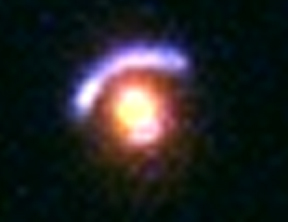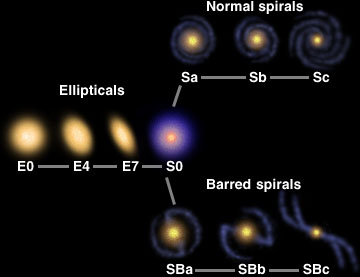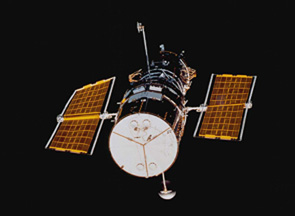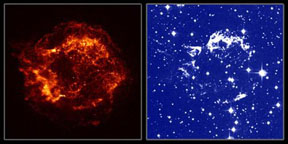Click on image for full size
Courtesy of NASA
Pretty Lenses are Caught by Hubble
News story originally written on May 14, 1999
The NASA Hubble Space Telescope has recently found some spectacular mirages produced by gravitational lenses in space. These lenses act as giant magnifying glasses for the Universe. A lens is produced when a large object such as a galaxy or black hole bends the light coming from behind it. This bending forms figures and patterns of light around the object.
Scientists have formed a "top ten" list from the lenses photographed by Hubble. They were found in an area about the size of a full moon, which means that many more exist than once thought.
The Earth's atmosphere blocks our view of many lenses, even when using the most powerful telescopes. Although Albert Einstein knew in 1936 that lenses were being produced in these scenarios, it wasn't until 1979 that the first one was discovered. With the help from the Hubble Telescope, we can find many more. The new discoveries allow us to probe deeper into the past, where we can learn more about the expansion and evolution of our Universe.
Dr. Kavan Ratnatunga, of Carnegie Mellon University formed the top ten list. "Follow-up spectroscopic observations are now needed to verify that the object is far more distant than the lensing galaxy seen at the center, as well as to derive better distance estimates to confirm that multiple images really belong to the same object. These are however very difficult observations even for the largest ground-based telescopes."















